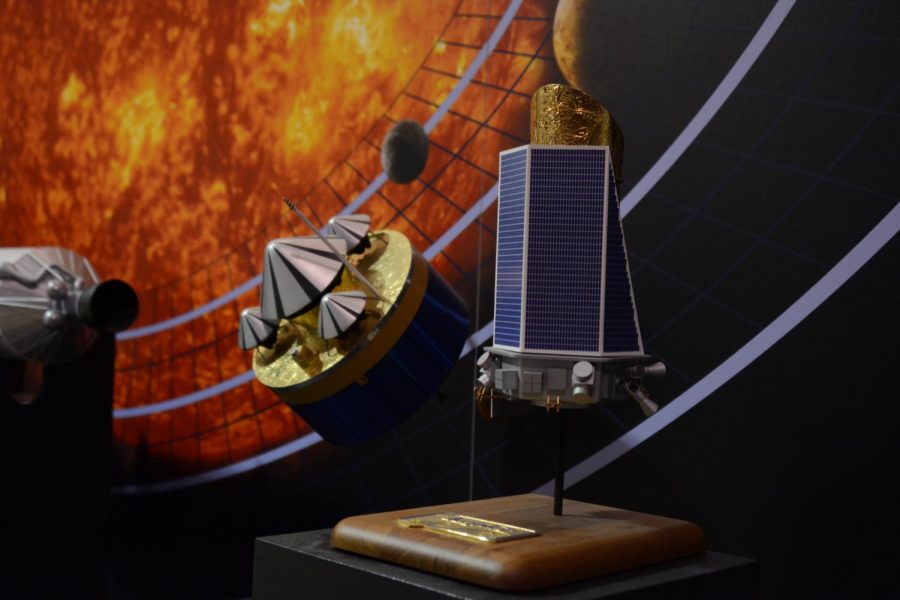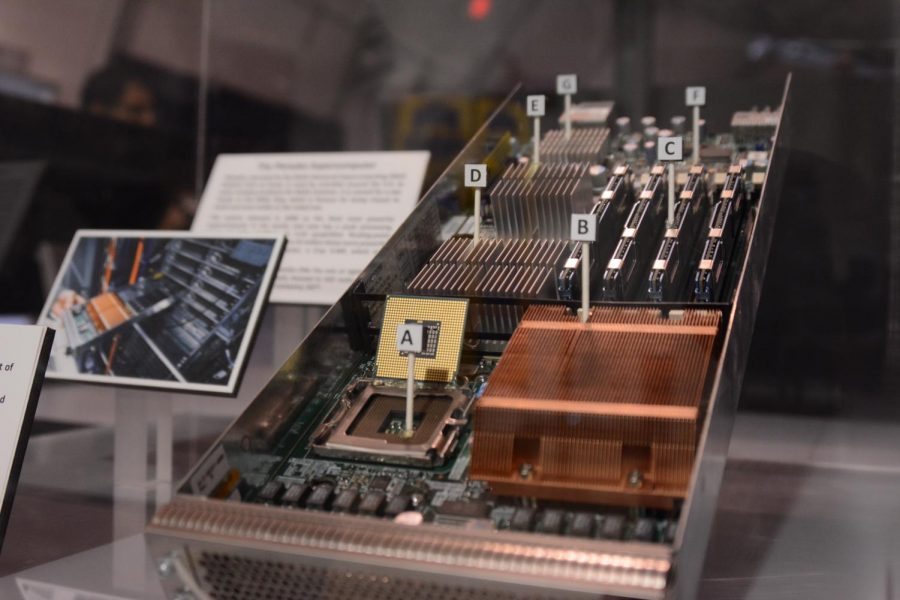Space industry’s privatization leads to new breakthroughs, challenges
April 23, 2018
Since the Soviet Union’s launching of the first artificial satellite Sputnik 1 and the United States’ landing of the first humans on the Moon in Apollo 11 during the Space Race years, aerospace research agencies internationally have continued to push the world’s boundaries of space exploration knowledge. From NASA’s ongoing development of the James Webb Space Telescope to the upper school’s own Astronomy Club, every generation adds another piece to the universe’s puzzle.
Many of today’s space telescopes and observatories fly between 160 and 2,000 kilometers above the Earth. This range, defined as low Earth orbit, allows the satellite to observe weather patterns, orbit the planet at a fast enough rate to visit the same region multiple times a day and avoid the radiation of the inner Van Allen Belt 1,000 to 6,000 kilometers above the planet’s surface.
“Low Earth orbit is generally close enough that you can set up a satellite to be that you’re not dealing with significant air resistance from our atmosphere,” Dr. Cameron Hummels, postdoctoral scholar in astronomy at CalTech, said. “The inner boundary is definitely made so that you’re not going to start having significant air resistance as the satellite passes over, which ultimately will cause it to burn up and fall into the Earth.”
While government space agencies like NASA and the European Space Agency (ESA) historically have managed the majority of the world’s space expeditions, private spaceflight companies are taking on an increasingly larger role in rocket development in the 21st century. One such enterprise is SpaceX; founded in 2002 by CEO Elon Musk, SpaceX manufactures spacecraft with the “ultimate goal of enabling people to live on other planets.”
As industry privatization often involves changes to how government services are provided to the public, its critics argue that private companies may prioritize profit over quality of work. In the case of the space industry, they could restrict access to satellite data to only those willing to pay for it.
“When you propose to do an observation, say on Hubble, you have one year to have the data private to yourself before the data becomes public to the world for free,” Dr. David Helfand, department chair of astronomy at Columbia University, said. “The commercial interests would be in downward-facing satellites, which can see insect infestations in crops and drought patterns.”
On the other hand, privatizing the space industry could cut down on government taxes and allow the government to focus spending on industries more difficult to privatize. With various organizations tackling space exploration from multiple angles, partnerships between the government and the private sector are common.
NASA has expressed interest in SpaceX’s Falcon Heavy spacecraft, which launched from Florida’s Kennedy Space Center on Feb. 6. Capable of lifting 64 metric tons into low Earth orbit, more than twice the amount of NASA’s retired Space Shuttle’s maximum carrying capacity, it’s comparable to NASA’s upcoming fellow heavy lifter the Space Launch System. While it’s designed to lift even more than the Falcon Heavy, current development plans estimate it to be 10 times as expensive as SpaceX’s spacecraft. However, both of these projects have enough power to reach Mars.
“One of the really difficult things about sending people to Mars is you’re going so far away and you’re going to an entirely different planet; you’re signing up for a multi-year trip,” Andrew Owens, NASA Space Mission Analysis Branch Pathways Student Trainee, said. “If you think in terms of going camping, you’re camping for two and a half years, and you’ll never be able to stop at a grocery store or get supplies delivered.”
Regardless of which celestial body the space industry does decide to visit next, it’s clear part of the future of space travel lies in the findings of spacecraft like the already-launched Falcon Heavy and the Space Launch System, scheduled to take off in 2019.
Inside the NASA Ames: Local research center provides window into past and future space exploration.
This piece was originally published in the pages of the Winged Post on March 29, 2018.


















![“[Building nerf blasters] became this outlet of creativity for me that hasn't been matched by anything else. The process [of] making a build complete to your desire is such a painstakingly difficult process, but I've had to learn from [the skills needed from] soldering to proper painting. There's so many different options for everything, if you think about it, it exists. The best part is [that] if it doesn't exist, you can build it yourself," Ishaan Parate said.](https://harkeraquila.com/wp-content/uploads/2022/08/DSC_8149-900x604.jpg)




![“When I came into high school, I was ready to be a follower. But DECA was a game changer for me. It helped me overcome my fear of public speaking, and it's played such a major role in who I've become today. To be able to successfully lead a chapter of 150 students, an officer team and be one of the upperclassmen I once really admired is something I'm [really] proud of,” Anvitha Tummala ('21) said.](https://harkeraquila.com/wp-content/uploads/2021/07/Screen-Shot-2021-07-25-at-9.50.05-AM-900x594.png)







![“I think getting up in the morning and having a sense of purpose [is exciting]. I think without a certain amount of drive, life is kind of obsolete and mundane, and I think having that every single day is what makes each day unique and kind of makes life exciting,” Neymika Jain (12) said.](https://harkeraquila.com/wp-content/uploads/2017/06/Screen-Shot-2017-06-03-at-4.54.16-PM.png)








![“My slogan is ‘slow feet, don’t eat, and I’m hungry.’ You need to run fast to get where you are–you aren't going to get those championships if you aren't fast,” Angel Cervantes (12) said. “I want to do well in school on my tests and in track and win championships for my team. I live by that, [and] I can do that anywhere: in the classroom or on the field.”](https://harkeraquila.com/wp-content/uploads/2018/06/DSC5146-900x601.jpg)
![“[Volleyball has] taught me how to fall correctly, and another thing it taught is that you don’t have to be the best at something to be good at it. If you just hit the ball in a smart way, then it still scores points and you’re good at it. You could be a background player and still make a much bigger impact on the team than you would think,” Anya Gert (’20) said.](https://harkeraquila.com/wp-content/uploads/2020/06/AnnaGert_JinTuan_HoHPhotoEdited-600x900.jpeg)

![“I'm not nearly there yet, but [my confidence has] definitely been getting better since I was pretty shy and timid coming into Harker my freshman year. I know that there's a lot of people that are really confident in what they do, and I really admire them. Everyone's so driven and that has really pushed me to kind of try to find my own place in high school and be more confident,” Alyssa Huang (’20) said.](https://harkeraquila.com/wp-content/uploads/2020/06/AlyssaHuang_EmilyChen_HoHPhoto-900x749.jpeg)








